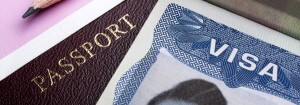On March 6, 2017 President Trump issued his second executive order to-date, banning foreigners from six Muslim-majority countries from traveling to the U.S. The new executive order, which was due to go into effect on March 15, was a revised version of Trump’s first travel ban, which he rescinded after questions of its adherence to the U.S. Constitution were addressed by the 9th Circuit Court of Appeals. Just hours before the second travel ban was to go into effect, a district judge in Honolulu issued a temporary restraining order to block the president’s revised executive order.
Honolulu Judge Blocks Trump’s Second Travel Ban
 On Wednesday, March 15th, 2017 Judge Derrick K. Watson of the United States District Court in Honolulu blocked the nationwide implementation of President Trump’s new travel ban. The revised ban—which included a 90 day freeze on issuing visas to people from Iran, Sudan, Somalia, Libya, Yemen, and Syria (among other restrictions)—was due to go into effect just hours after the federal judge halted the order. American citizen Ismail Elshikh and the state of Hawaii brought the case to the district court, contending that national security was a thin pretext for a travel ban that was based, at least in part, on a discriminatory intent.
On Wednesday, March 15th, 2017 Judge Derrick K. Watson of the United States District Court in Honolulu blocked the nationwide implementation of President Trump’s new travel ban. The revised ban—which included a 90 day freeze on issuing visas to people from Iran, Sudan, Somalia, Libya, Yemen, and Syria (among other restrictions)—was due to go into effect just hours after the federal judge halted the order. American citizen Ismail Elshikh and the state of Hawaii brought the case to the district court, contending that national security was a thin pretext for a travel ban that was based, at least in part, on a discriminatory intent.
Religious Discrimination Inherent in Trump’s Travel Ban
Trump’s first travel ban—which included a travel block of people from Iraq as well as an indefinite ban of Syrian refugees into the United States—prioritized immigrants facing religious persecution. Because the ban targeted Muslim-majority countries, opponents argued this exemption was tantamount to religious discrimination. The Trump administration claimed that the revisions to the executive order rendered the newest iteration religiously neutral, but because of its continued targeting of immigrants from Muslim-majority countries the Hawaii district court disagreed.
The record before this Court is unique. It includes significant and unrebutted evidence of religious animus driving the promulgation of the Executive Order and its related predecessor.
While the government suggested courts should focus solely on the explicit text of the order and not look at other evidence of intent, Judge Watson concluded that the president’s own statements clearly supported an explicit bias against Muslim immigrants.
The Government appropriately cautions that, in determining purpose, courts should not look into the “veiled psyche” and “secret motives” of government decisionmakers and may not undertake a “judicial psychoanalysis of a drafter’s heart of hearts.” … The Government need not fear. The remarkable facts at issue here require no such impermissible inquiry. For instance, there is nothing “veiled” about this press release: “Donald J. Trump is calling for a total and complete shutdown of Muslims entering the United States.”
According to the The Washington Post, recent government reports also undermine the stated purpose of the executive order. One report from the Department of Homeland Security found that the majority of foreign-born terrorists likely adopted their extreme ideology after entering the U.S., not before. The second shows that the highest risk of foreign terrorism is likely to come from countries not included in Trump’s travel ban. Judge Watson concluded that:
Any reasonable, objective observer would conclude, as does the Court for purposes of the instant Motion for TRO, that the stated secular purpose of the Executive Order is, at the very least, “secondary to a religious objective” of temporarily suspending the entry of Muslims.
Citing Judge Watson’s detailed decision, Judge Theodore Chuang of Maryland also issued a preliminary injunction of Trump’s travel ban, stating:
[Judge Watson’s] statements, which include explicit, direct statements of President Trump’s animus toward Muslims and intention to impose a ban on Muslims entering the United States, present a convincing case that the first executive order was issued to accomplish, as nearly as possible, President Trump’s promised Muslim ban. In particular, the direct statements by President Trump and (former New York City Mayor Rudy) Giuliani’s account of his conversations with President Trump reveal that the plan had been to bar the entry of nationals of predominantly Muslim countries deemed to constitute dangerous territory in order to approximate a Muslim ban without calling it one precisely the form of the travel ban in the first executive order.








